
With their immense volcanic craters, dramatic cliff faces and “Lost World” waterfalls, it’s no surprise that the Azores is dubbed the “Hawaii of the Atlantic”.
This string of nine Portuguese islands around 2,400 miles from the East Coast of the U.S. – São Miguel, Santa Maria, Terceira, Graciosa, São Jorge, Pico, Faial, Flores, and Corvo – is remarkably easy to reach, with regular nonstop flights from both sides of the Atlantic.
Once you’re there – you’ll likely land on the main island of São Miguel, which is about the size of San Antonio, Texas – an efficient system of inter-island flights and ferries can transport you further into an archipelago that has the power to mesmerize at every turn, with each island a unique destination in its own right.
Here we reveal the must-sees and must-dos for each island, along with a recommendation for a great place to stay.
The Eastern Group of islands
A world of jaw-dropping volcanic views and hot springs, and where you’ll find the capital of the archipelago, Ponta Delgada.
São Miguel Island (The Green Island)
Must see
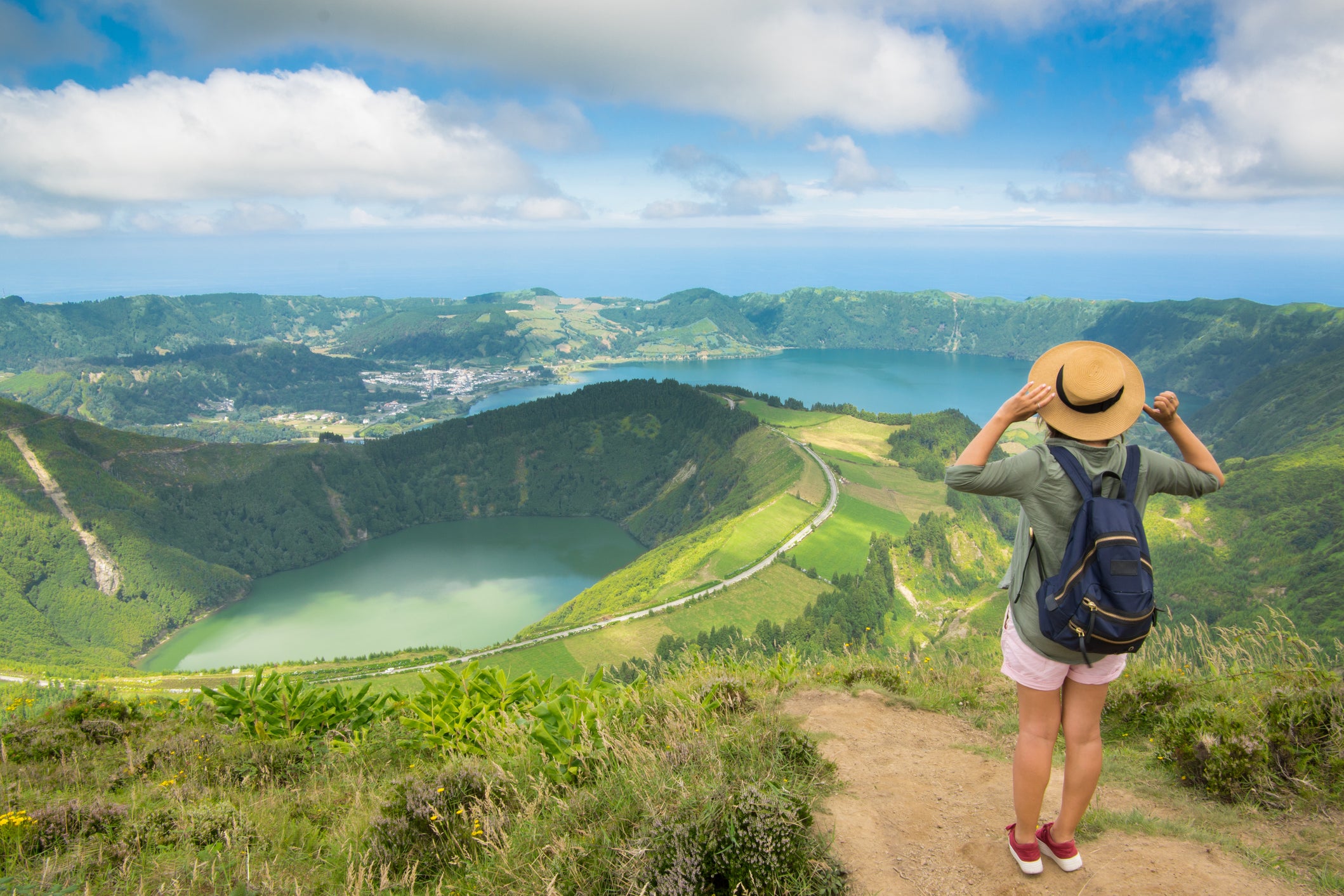
Iconic crater lakes: Perhaps the most iconic view and No.1 photo opportunity in all of the Azores is of Sete Cidades – beautiful twin lakes (one blue, one green) that glisten inside the largest volcanic crater on the island.
Two lookouts on the rim of the caldera offer the best views – Miradouro da Vista do Rei (King's Viewpoint) and Miradouro da Boca do Inferno (Hell's Mouth Viewpoint).
There are numerous hikes around the dormant caldera, which formed around 36,000 years ago, and you can even see the lakes up close on a kayak.
Pristine Lagoa do Fogo (Fire Lake) is São Miguel's other showstopping crater lake and not to be missed, either.
Must do
Take a hot dip: Once you've soaked up the crater-lake views, visit Furnas village and enjoy a rejuvenating soak in geothermal springs rich in iron and essential minerals.
One top spot is Terra Nostra Park, home to a huge rust-colored pool set amid lush botanical foliage.
For a more intimate experience, consider Poça da Dona Beija, which features a series of smaller pools. For an even more magical dip, go at night – the pools are open until 11pm and atmospherically spotlit.
Pro tip – don dark swimwear as the iron-rich waters stain light fabrics.
Visit a tea plantation: There are only two commercial tea plantations in Western Europe, and they're both on São Miguel, a few minutes apart from each other. One is Chá Porto Formoso and the other, the largest and oldest, is Gorreana, which was founded in 1883. You can visit both without a reservation. Roam the vibrant fields at will, taste the teas, and allow knowledge from tour guides to percolate.
Loll on a black-sand beach: There are several gorgeous beaches blanketed in dark sand on São Miguel. The most photogenic is arguably Mosteiros Beach at the western tip, with jagged volcanic islets that jut out of the ocean just offshore proving irresistible bait for viewfinders.
Santa Barbara Beach, meanwhile, is the spot for epic surf waves, and Porto Formoso Beach offers a more tranquil vibe with its lush, green cliffs.
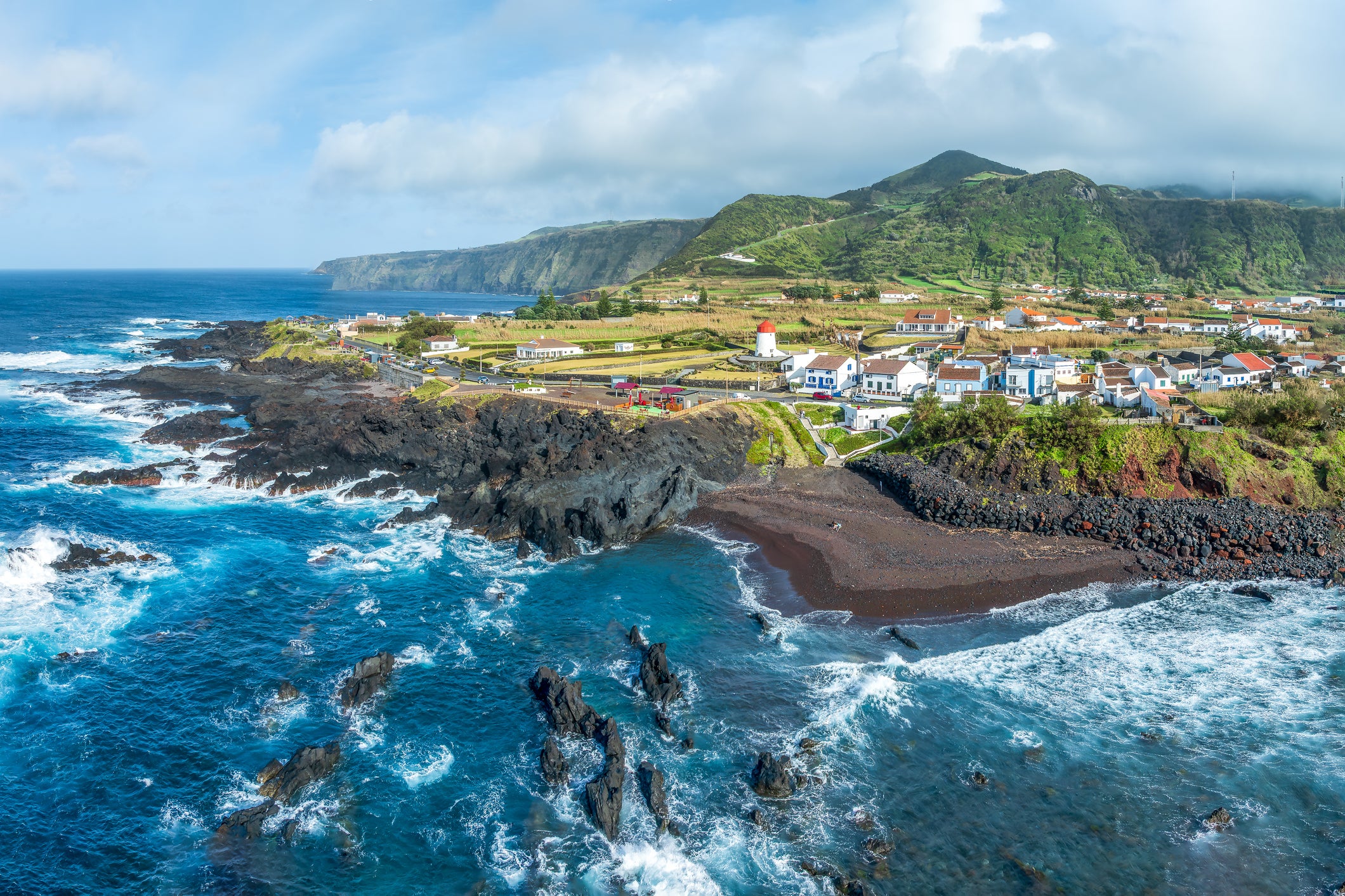
Head to Ribeira Quente Beach and you can luxuriate in waters that are slightly warmer thanks to nearby geothermal activity. Milicias Beach and Pópulo Beach are closest to the capital and watched over by lifeguards.
Explore the capital: After drying off from a dip at one of these strips of sand, take some time to explore Ponta Delgada, which is an absolute charmer.
Gaze upon the triple-arched city gates (Portas da Cidade), climb the city hall's clock tower, wander the bustling farmers' market and stroll the stunning seaside promenade. And don't forget to pop into the imposing Forte de São Brás at the end, home to the Military Museum of the Azores.
Go whale watching: Ponta Delgada is a major hub for whale-watching trips, with boats regularly encountering the majestic animals. Azorean waters are frequented by up to 28 species every year.
Must eat
Natural ovens: The enterprising locals put São Miguel's geothermal belly to good use and use the subterranean heat to cook "cozido das Furnas" – a traditional meat and vegetable stew.
The cooking site is on the shores of Lagoa das Furnas (Furnas Lake), with the pots pulled out around noon and the contents served up at local restaurants.
Pineapple perusal: Another vital foodie experience is to try an Azorean pineapple, which are generally sweeter than mainland varieties.
There are thousands of pineapple greenhouses, but only a handful of plantations are open to visitors. The Arruda Pineapple Plantation is one. Here you can take a free tour and learn all about the various stages of cultivation (and try a pineapple mojito).
Where to stay
Pedras do Mar Resort & Spa in Ponta Delgada has 92 air-conditioned rooms, an outdoor infinity pool and stunning oceanfront views.
Read more: Forget Paris: Five overlooked French cities you can reach by high-speed train (from just $13)
Santa Maria
Must see
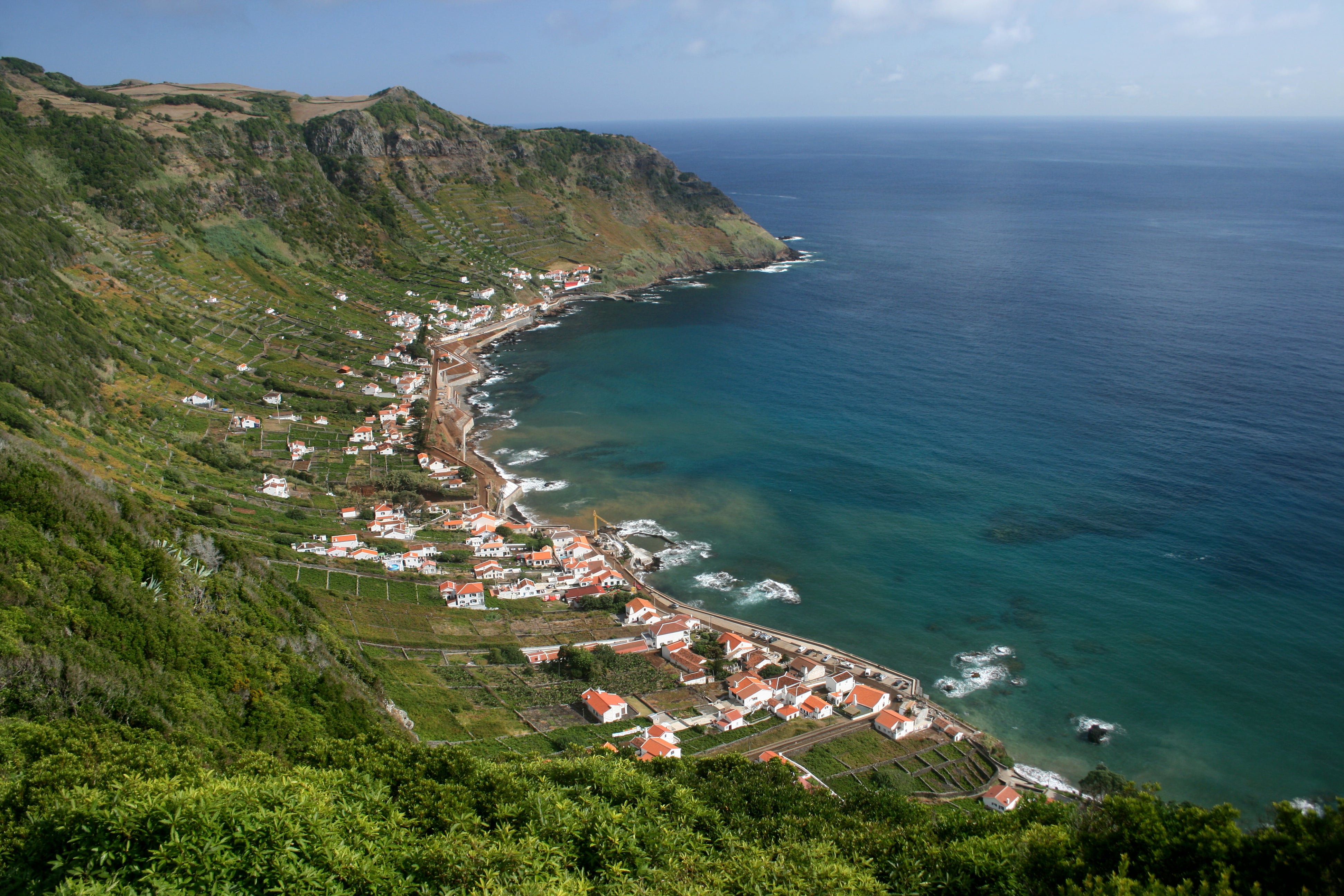
Barreiro da Faneca: You'll feel like you're on an alien planet in this clay landscape often called the "Red Desert of the Azores”.
Cascata do Aveiro: This 360-foot-tall waterfall, on the eastern coast near the village of Maia, is a contender for Portugal's largest. And most mesmerizing — the water cascades over a towering basalt cliff.
Must do
Explore Anjos Village: This is where Christopher Columbus is said to have landed on his return from the Americas in 1493. According to legend, he ordered a mass to be held in the Ermida de Nossa Senhora dos Anjos chapel, the remnants of which can still be seen. The village, with its pretty whitewashed walls and yellow doors also makes for a superb photo opportunity.
Where to stay
Charming Blue hotel has a beautiful pool and sea views.
The central group of islands
Volcanic peaks, Unesco-listed vineyards and fine cheese. Plus mysterious caves.
Terceira Island (The Lilac Island)
Must see
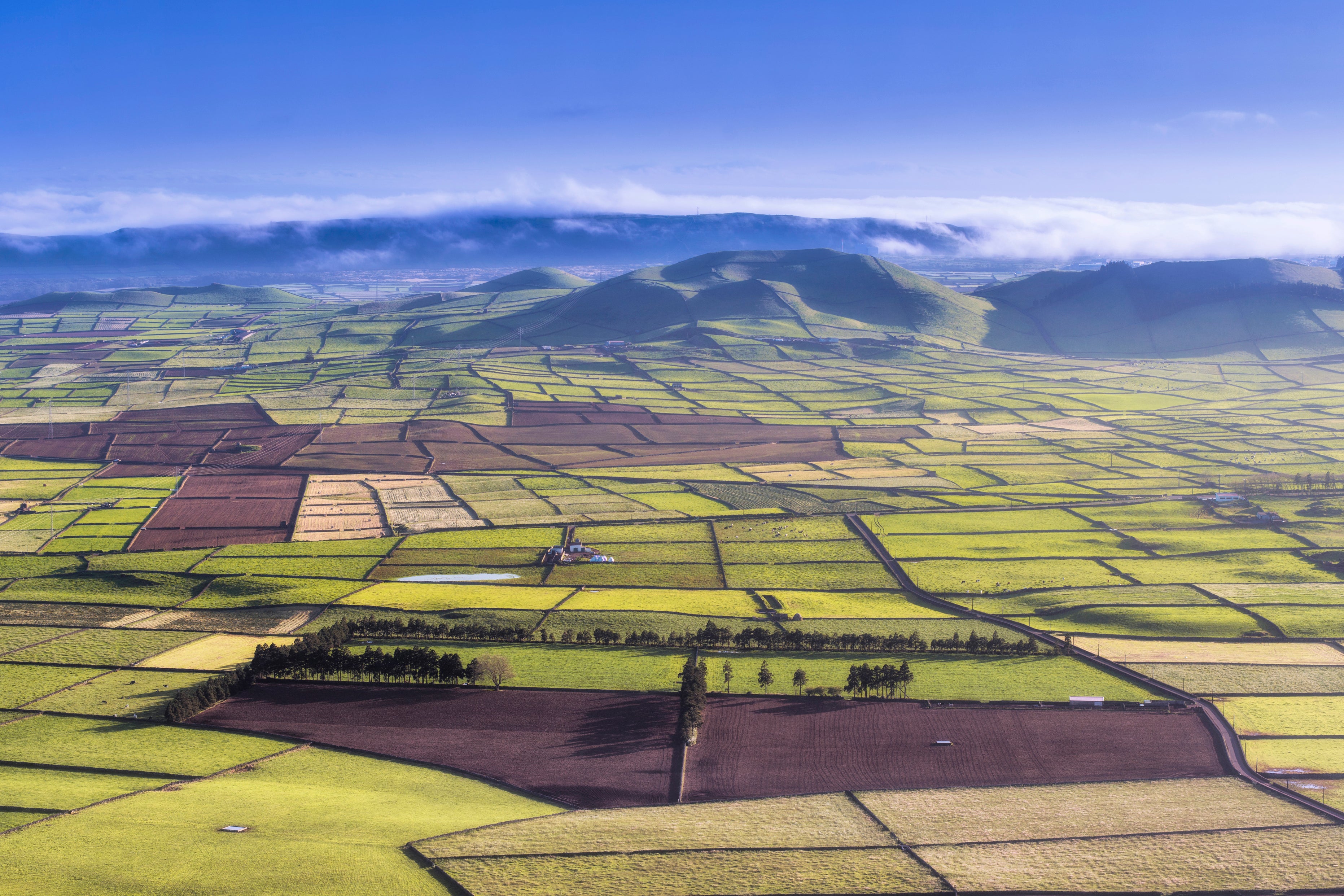
Terceira’s dreamy fields: Your Instagram followers will thank you for posting a picture taken from the Serra do Cume Viewpoint, which overlooks a spellbinding mosaic of green fields known locally as the Manta de Retalhos ("patchwork quilt").
Must do
Visit a capital attraction: Explore the elegant capital, Angra do Heroísmo, a Unesco World Heritage city that was a crucial safe harbor for Age of Discovery navigators. Devastated by an earthquake in 1980, it has been rebuilt in style.
At one end is the 16th-century Fortress of Saint John the Baptist, which abuts the breathtaking – and hikeable – Monte Brasil sea volcano.
Swim in volcanic pools: On the north coast of Terceira are a series of incredible natural pools cut into otherworldly swathes of lumpy volcanic rock. It sounds wild, but the area, the Biscoitos bathing site, is a well-organized, popular swim spot, with steps and ramps leading into the crystal-clear water.
Walk inside a volcano: Algar do Carvão (‘Cavern of Coal’) is a volcanic chimney of a dormant volcano, and around 300 steps take visitors deep into its moss-lined interior. At the time of writing, the site was closed due to the construction of a new visitors' center. Check montanheiros.com for updates.
Where to stay
Pousada Forte Angra do Heroísmo is set dramatically within the walls of São João Batista Fortress, with spectacular views of the Atlantic Ocean included in the price.
Read more: These hotels have very specific concierge services, from sandcastle building to a ‘bourbon butler’
Pico Island (The Black Island)
Must see
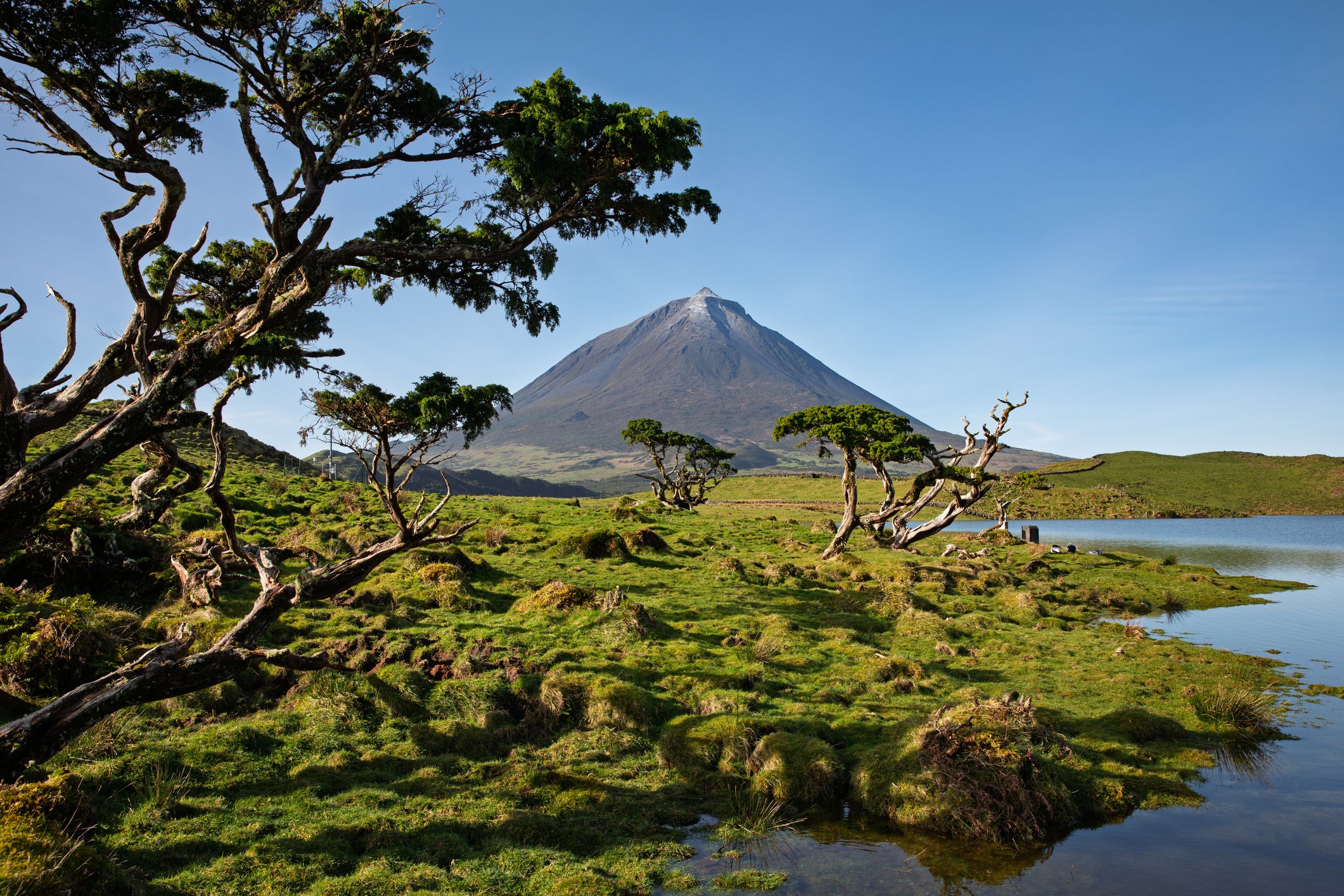
Unesco World Heritage-protected vineyard landscape: Pico Island has a thriving wine-making industry, with vineyards spanning about 2,400 acres that are separated by a vast grid of intricate walls (currais) made of black volcanic rock. It’s a captivating sight.
Must do
Climb Portugal’s highest mountain: Ascending Mount Pico, which reaches a height of 7,713 feet above sea level, is a challenge, but the views from the top make the toil thoroughly worthwhile.
Where to stay
Hotel Caravelas offers an outdoor pool and rooms with private balconies and air conditioning.
Read more: European towns and villages that look like a Disney movie
Faial Island (The Blue Island)
Must see
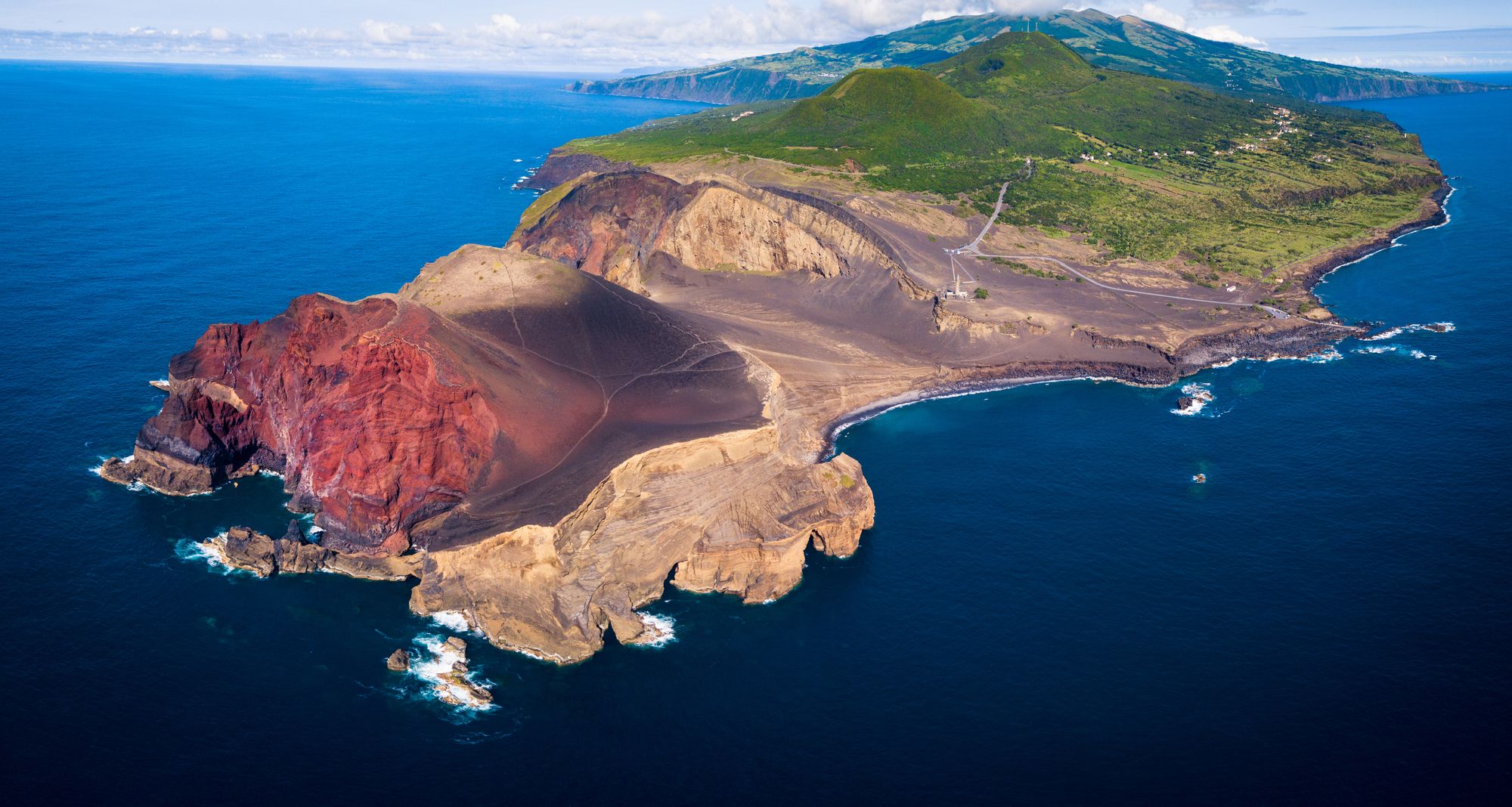
The eerie landscape formed by a volcano: Capelinhos volcano erupted in 1957 and 1958 and with its birth came the creation of a ghostly black landscape that stands in stark contrast to the Azores’ lush greenery. Visit the underground Interpretation center to learn more.
Must do
Hike the Caldeira do Faial: This massive volcanic crater, crowned by Cabeço Gordo — Faial’s highest point at 3,422 feet (1,043 m) — spans about 1.2 miles across and plunges to a depth of 1,300 feet. The four-mile trail that loops around its rim rewards hikers with spectacular views of the volcano and beyond.
Explore Horta: The capital of Faial has a busy, cosmopolitan harbor with forts and defensive walls dating back hundreds of years that once protected the city from pirate and buccaneer raids. Recharge with a drink at Peter Café Sport, on the marina. It’s been a much-loved port of call for yachtsmen and adventurers since 1918.
Where to stay
Quinta da Meia Eira offers sea views, fresh pastries for breakfast and it has a rooftop swimming pool.
Read more: Luxury hotels with the best service: The world’s most impressive stays loved by billionaires
São Jorge Island
Must see
.jpeg?trim=0%2C0%2C1%2C0)
Fajãs (coastal platforms): Gaze in wonder at the amazing coastal plains formed by lava flows that are dotted along much of the island’s rugged northern and southern coasts.
Must do
Swim in natural pools: Allow time to become untethered as you splash around in the eye-catching lava pools on the north coast near Fajã do Ouvidor, one of the most famous coastal platforms.
Eat cheese: São Jorge is famous for its peppery cheese, or Queijo de São Jorge. Its heralded, complex flavor is due in part to the milk coming from cows grazing on the island’s volcanic pastures.
Where to stay
Cantinho das Buganvilias is a great base for exploring the island, with an infinity pool and rooms with private patios.
Read more: 10 of the best under-the-radar beaches in the US for crowd-free coastal escapes
Graciosa Island (The White Island)
Must see
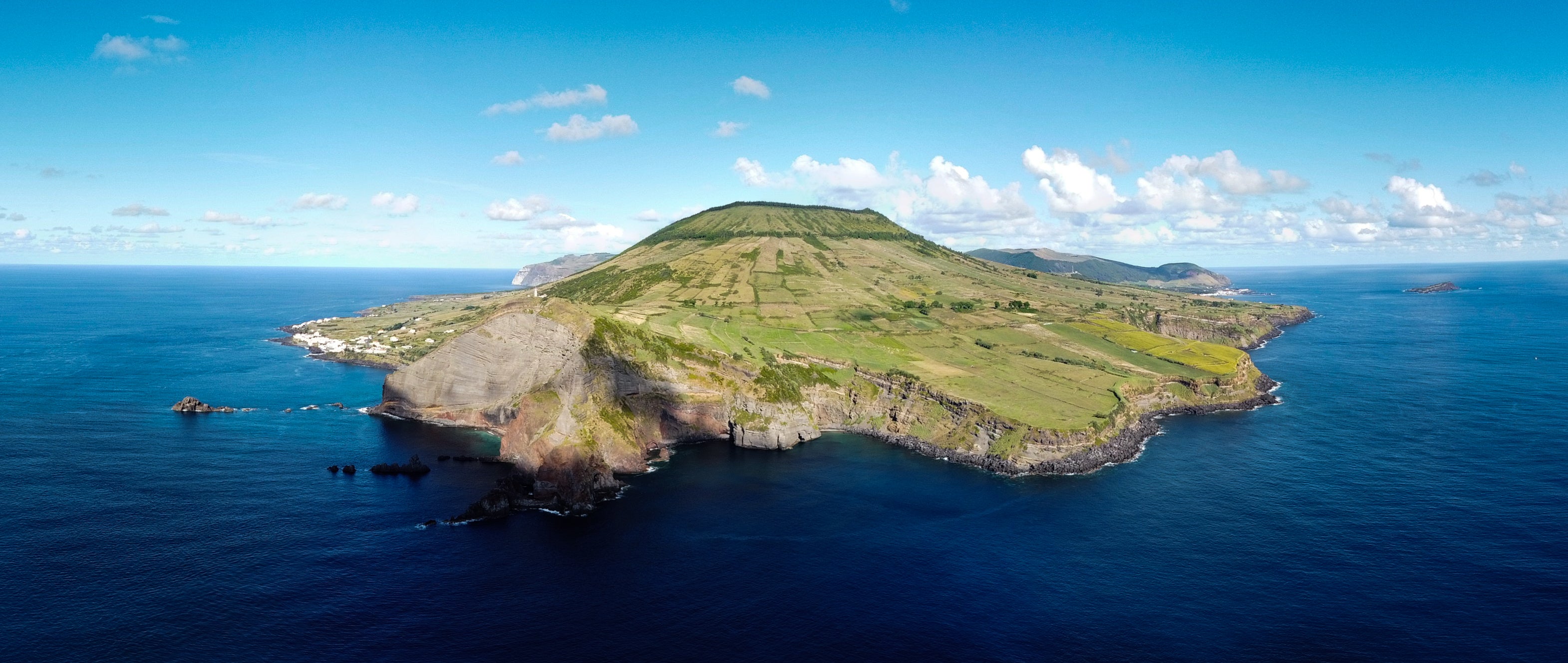
Furna do Enxofre (sulphur grotto): With its perfect dome-shaped roof, this immense lava cave in the southeast of the island inside the Caldeira da Ilha Graciosa (Graciosa Island Caldera) is a sight to behold. Visitors descend to the floor of the cavern via 183 steps.
Must do
Carapacho Thermal Spa: Let the warm mineral waters at this coastal thermal spa soothe your limbs. The water emerges at between 97F and 104F, is rich in salts, and has been prescribed to treat joint and skin issues since the spring's discovery in the 18th century.
Where to stay
Hotel da Graciosa overlooks the Bay of Porto da Barra and boasts an outdoor pool surrounded by gardens.
Read more: 72-hour escapes to Europe: Six itineraries to see the best sights
The Western Group of islands
These are the most remote islands in the Azores, with visitors drawn to their dramatic cliffs and waterfalls.
Flores Island (The Flower Island)
Must see
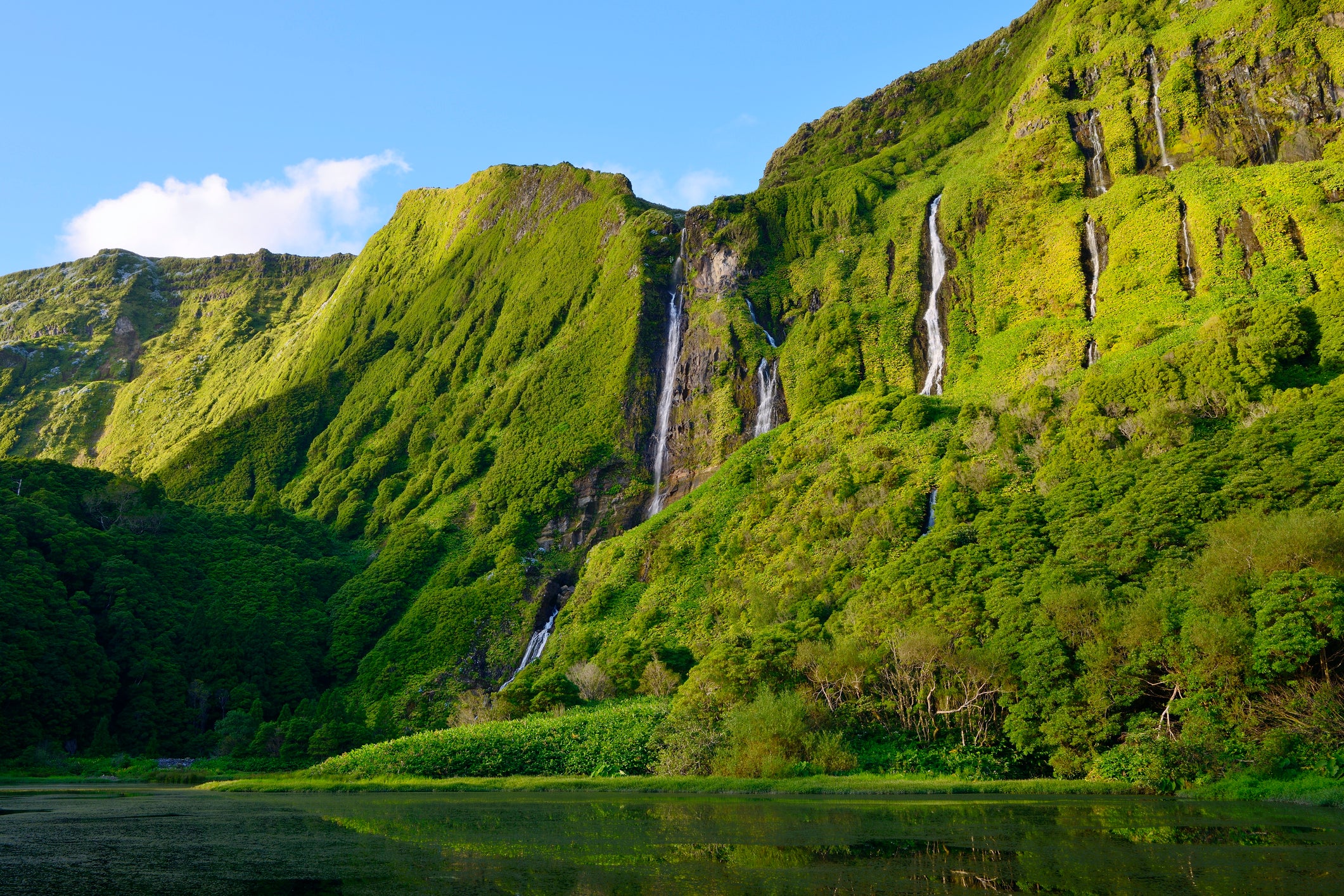
Ribeira do Ferreiro (sometimes called the Wall of Waterfalls): Ribbons of water cascade dramatically over a 500-foot volcanic cliff smothered in verdant foliage and feed into a tranquil lagoon. It’s like a scene from a fantasy movie and worth the airfare alone.
Crater sights: View the bewitching crater lakes in the island’s interior, particularly Lagoa Funda (Deep Lagoon) and Lagoa Rasa (Shallow Lagoon). They’re both easily seen from the Miradouro Lagoas Rasa e Funda viewpoint, from where you’ll notice their contrasts – the former is deep, dark and mysterious, the latter has clearer water and a serene atmosphere.
Must do
Explore Fajã Grande: Bounded by imposing 1,800-foot cliffs and the rugged coastline, this settlement is considered one of Portugal’s most beautiful.
Go on a (short) road trip: This 55-square-mile island is road trip heaven, with cliffs, waterfalls and lush valleys unfolding before your eyes around every twist and turn.
Where to stay
Sitio da Assumada is a three-minute walk from the beach and each room comes with a private bathroom equipped with a bidet.
Read more: Forget Disney: 24 real-life fairytale castles in the UK and Europe you can stay in
Corvo Island
Must see
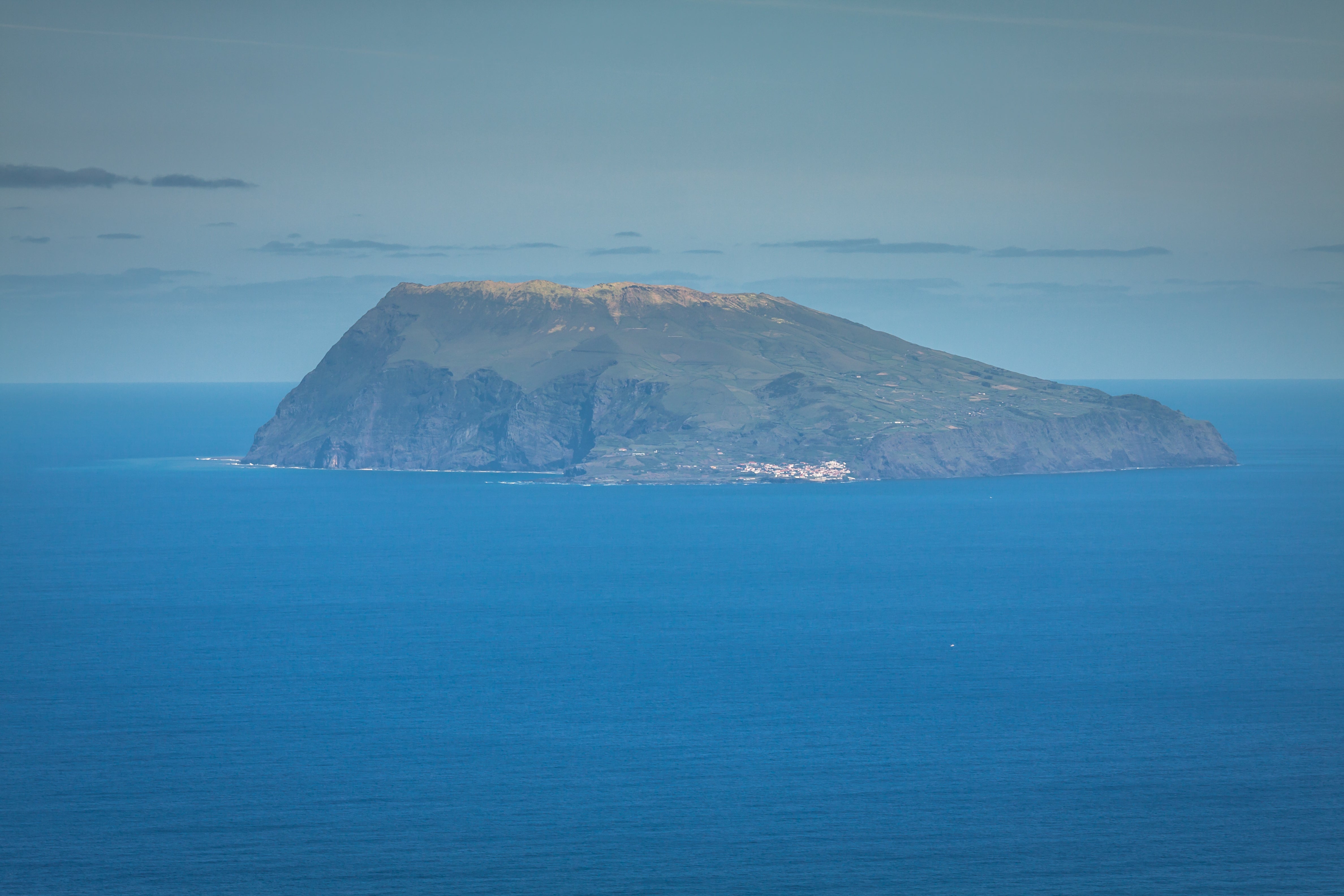
Caldeirão (Large Cauldron): The big-ticket attraction on the smallest island in the archipelago is this immense volcanic crater, which measures 1.4 miles across and plunges to a depth of 1,000 feet. On the caldera floor, tiny volcanic cones mingle with peat bogs and two small lakes.
Must do
Explore Vila Nova do Corvo: This is the sole settlement on Corvo (population: just a few hundred people) and is framed by the formidable cliffs of the Caldeirão volcano. Lose yourself in the maze of cobblestone streets (many of which are too small for even compact cars).
Where to stay
Hotel Comodoro is mere steps from Corvo Airport and offers rooms with Wi-Fi, ensuites and garden, sea or mountain views.
Read more: Twenty-two incredible free things to do and see in New York City, from beaches to secret gardens
How to get to the Azores
Most flights from the U.S. and Canada arrive at Ponta Delgada on São Miguel Island and Lajes on Terceira Island. There are direct flights to the archipelago from Boston, New York, Toronto, and Montreal.
Once there, inter-island flights (run by SATA Air Açores) connect the three island groups, while regular ferry services (run by Atlânticoline) make for the most scenic mode of transport.
If your vacation is three to five days, focus on the largest island, São Miguel, and perhaps pop over to Santa Maria. Over seven to eight days, spend a few days on São Miguel, but then two to three days island hopping in the central group of islands (Terceira Island, Pico, Faial, and São Jorge). If you can stretch to 10 to 14 days, take a deep dive across the whole chain and visit Flores and Corvo, too.
This area in the US has made the list of the coolest neighborhoods in the world
This US eatery makes the list of the world’s best restaurants — and it’s not in New York City or LA
Tenerife to Oman: A look at the best options for your winter sun holiday this year
These are the 11 best hotels in Porto for exploring Portugal’s second city
Orcas sink tourist yacht off Portugal’s coast in latest attack







